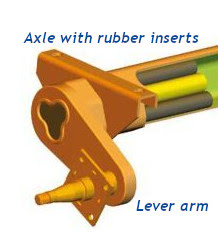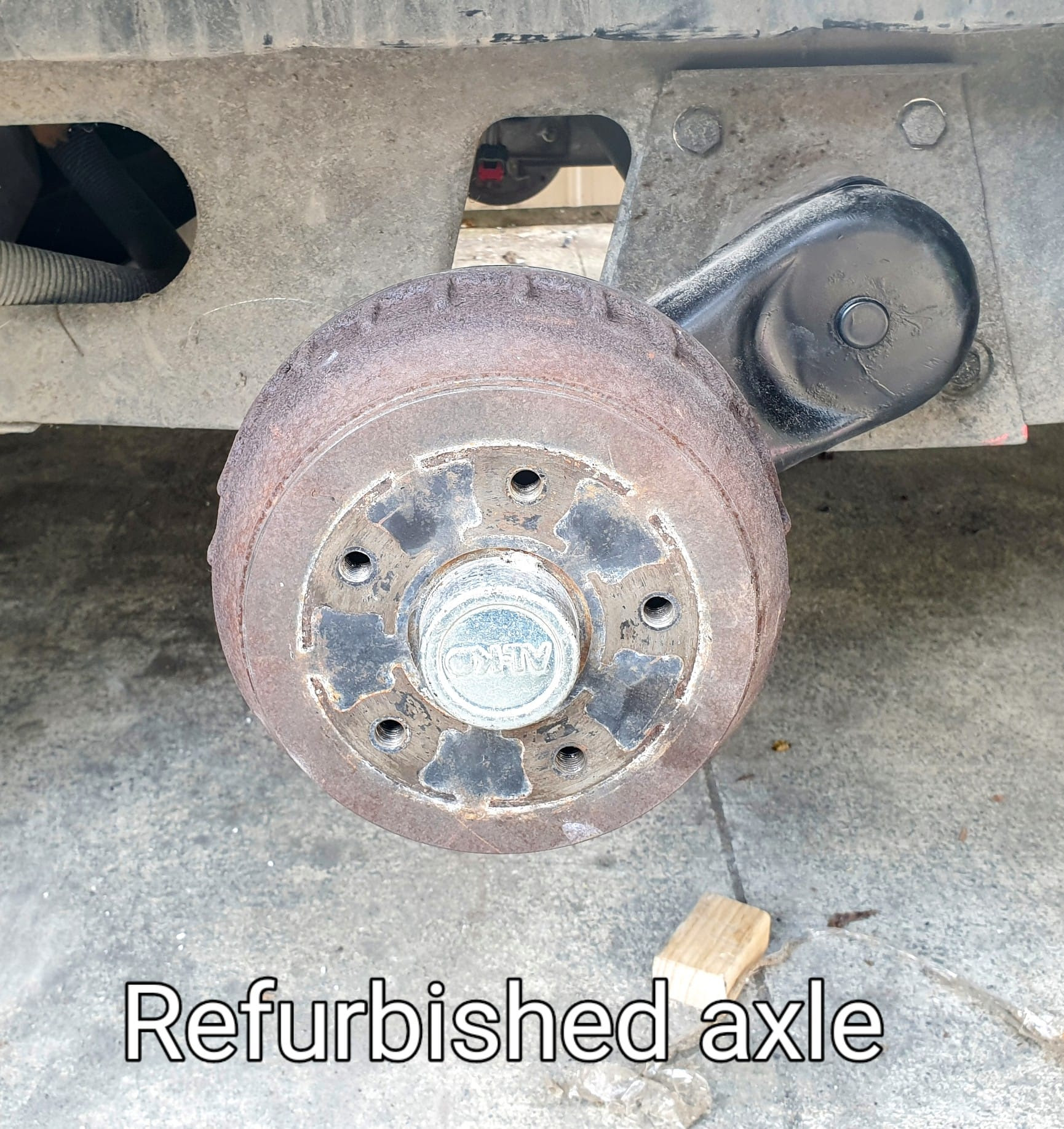Buying a European Caravan? Look out for the following issues

Are you considering buying a caravan or just checking the condition of your vehicle?
European caravans are specifically designed to be towed by low-powered vehicles on motorways throughout Europe, making them well-suited for lightweight tow vehicles. While these caravans are very popular in New Zealand, they were not intended to be loaded with gear and towed across logging tracks to remote locations.
Even our well-maintained roads can be uneven, which may impact the axle. When inspecting the axle, ensure that the lever arm is facing downward and that there is sufficient space for it to move up and down. Refer to the image below for guidance. Additionally, check the gap between the top of the tyre and the mudguard.

The lever arm is supported at a 25-degree angle by rubber inserts inside the axle tube. Over time, these rubber inserts become increasingly compressed, causing the lever arms to lose their downward angle and resulting in a rigid suspension. As a result, road vibrations can damage the structure, leading to cracks in the body and allowing moisture to penetrate the interior.
Book in for an axle rebuild. Click here
If you already find yourself in this position, don't despair
An axle can be repaired, a refurbished axle will rectify the trailing arm angle so it points downwards and makes the caravan sit much higher off the road surface, and the vehicle will tow better.
As a rough guide, the distance from the bottom of the caravan floor to the road surface measured at the axle should be about 400mm with some manufacturers and about 500mm with others. A refurbished or new axle will usually measure approximately 500mm, depending on the make and model.

Be cautious not to overload your European caravan. There is a plate located on the side of the entrance door that displays the weight restrictions. If you want to know how much your caravan weighs when it is fully loaded and ready to go, you can take it to the local waste depot. They typically have a weighing bridge available, and for a small fee, you can weigh your caravan for peace of mind.
The following paragraphs examine the consequences of towing a vehicle with a damaged axle.
What happens when the caravan is being towed
Imagine sitting in the back of your caravan while it's being towed down a bumpy road in New Zealand at 90 km per hour. (Please don’t try this!) It can be quite frightening, right? Now, think about what it would be like if the axle were rigid with no flexibility. In that case, the forces from the road would be transferred directly to the caravan’s structure and internal cabinetry, causing everything to shake and potentially loosen. Eventually, you would be towing a flexible, leaking container filled with dislodged cabinetry. See this link for an example of such a situation.
For your entertainment, I put in a link to Top Gear so you can see what not to do.
About the caravan chassis construction
The ALKO chassis is designed for convenience and is not welded. Instead, it consists of multiple interchangeable components made from galvanized pressed steel, which are bolted together. This versatile design allows manufacturers to use the same axle across different models by simply adjusting the lengths of the chassis rails. The strength of this design comes from the internal cabinets, which serve as bulkheads. They support and connect the floor, walls, and roof of the vehicle. If the chassis flexes, the forces are distributed through the furniture throughout the vehicle, ensuring stability and durability. The ALKO chassis is not welded (for build convenience); it comprises multiple interchangeable galvanised pressed steel components bolted together. The versatile design enables manufacturers to use the same axle for various models by changing the chassis rail lengths.
The strength of this design lies in the internal cabinets, which function as bulkheads that hold the floor, walls, and roof together. When the chassis flexes, the forces are distributed through the furniture throughout the vehicle.

The tow hitch
The tow hitch and its components experience the greatest forces within the caravan. When the tow vehicle accelerates, decelerates, or turns, these forces are transmitted through the front bulkhead (which is typically located inside the front gas locker) to the rest of the caravan via the floor and sidewalls. Consequently, the front bulkhead is the area most prone to movement. To check for any movement in your front bulkhead, ensure that the four outer steadies are lifted off the ground, leaving only the jockey wheel on the ground, or attach the caravan to a tow vehicle. Then, open the gas locker and observe where the bulkhead meets the sidewalls. Have someone else move the caravan up and down using the handles on the front wall. If you notice even the slightest movement at the connection between the bulkhead and the sidewalls, it indicates that issues may already be developing.
If there is movement, don't despair.
The vehicle is repairable. We can identify the source of the problem, correct it, and then adjust the chassis to be perfectly level according to factory specifications. After that, we will reattach the walls to the bulkheads, which will restore the vehicle's structural integrity.
Conclusion
If you have any doubts about the caravan, its towing, or if it is swaying or jerking excessively, you should consider having it checked.
If you want to ask questions, you can email us at info@vantagerv.nz


